Immersive Dashboard Design for VR - UX Case Study
Case Study: Immersive Dashboard Design for VR
As part of my continued exploration of immersive experiences, I embarked on a self-initiated AR/VR project to design a multi-functional dashboard in virtual reality.
What I do
- UX/UI design
- Writing
- Research
- Project Management
My Tools
- Figma
- Bezi
- Meta Quest 2
- Procreate
- Hand UI Prototype
Project Overview
A space where users can access real-time weather, stream music, check messages, and interact with personal tools in a spatial computing environment. The goal was to reimagine how we interact with everyday digital systems in 3D space, optimizing for clarity, usability, and immersive engagement.
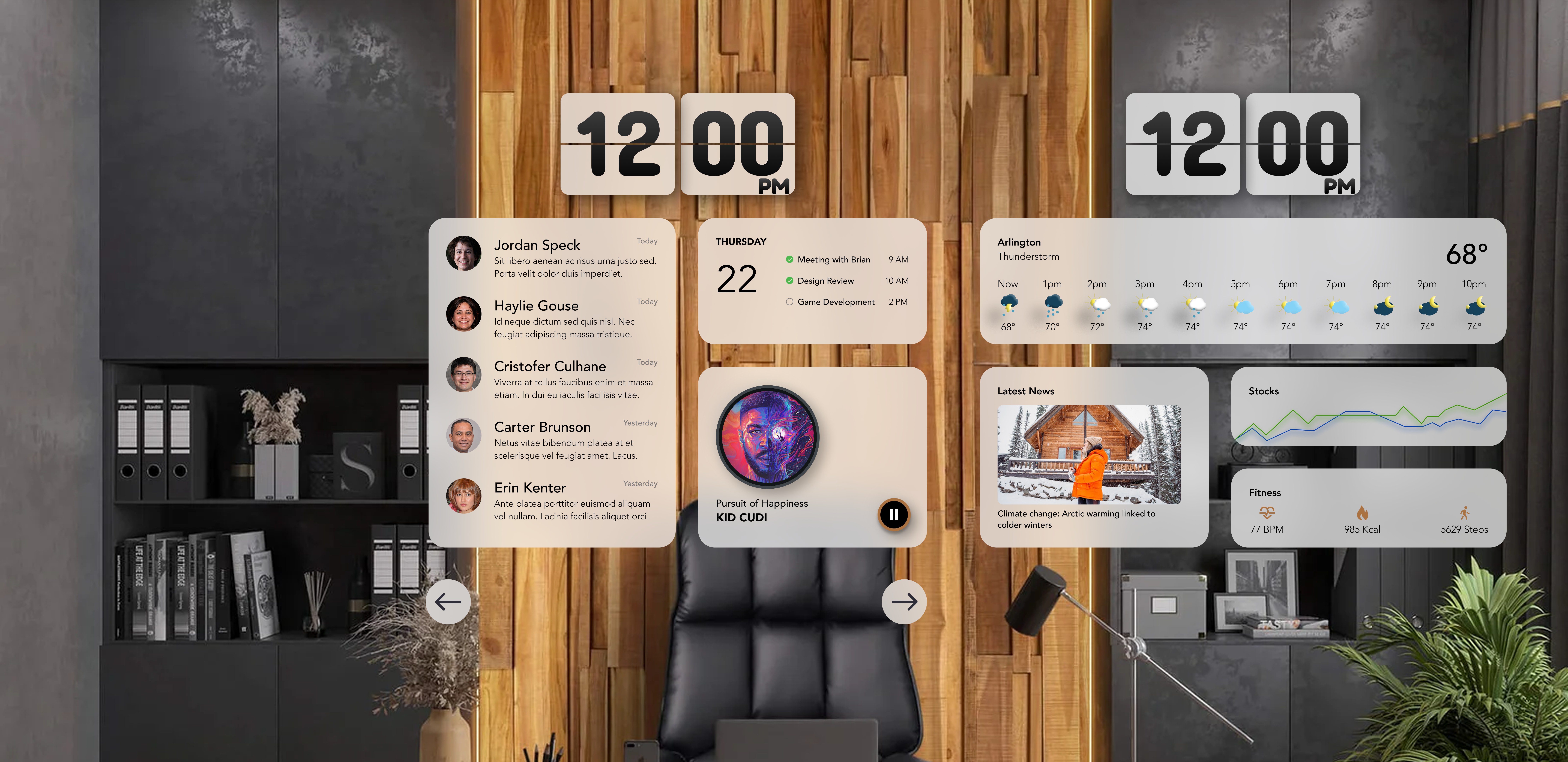
Design Process
Dashboard UX/UI Design: I began by sketching essential widgets—weather, music, messages, and calendar—prioritizing modularity and legibility in VR. The interface was designed in Figma with a clean aesthetic optimized for spatial readability.
3D VR Environment Creation: I built a calming scene in Bezi inspired by traditional Japanese homes and zen gardens. The environment featured open-air layouts and natural elements to foster presence and reduce cognitive load.
Integration and Publishing: After exporting the Figma UI and importing it into Bezi, I fine-tuned placement and lighting, then launched the dashboard on Meta Quest 2 for live interaction.
Testing on Meta Quest 2: Using the headset, I ran usability checks to ensure proper widget placement, interaction clarity, and comfort. Adjustments were made to reduce overlap and enhance scale.
Outcome
Successfully built and deployed a functional VR dashboard prototype
Seamless integration of 2D Figma designs into a fully navigable 3D space
Tested and iterated using real-world hardware to simulate end-user behavior
Demonstrated ability to bridge traditional UI tools and immersive environments
Next Steps: AR Hand UI Exploration
With the VR dashboard live, I'm now exploring the next frontier: Hand UI for Augmented Reality. This involves designing gesture-based interaction models for AR overlays, with the aim of enabling controller-free interactions in headset-based AR environments (such as Meta Quest 2’s passthrough mode). The goal is to create intuitive, screenless experiences that align with future spatial UX paradigms.
I’m currently experimenting with:
Hand gesture libraries
Anchor-based UI frameworks
User flows for contextual overlays in AR
The Experience
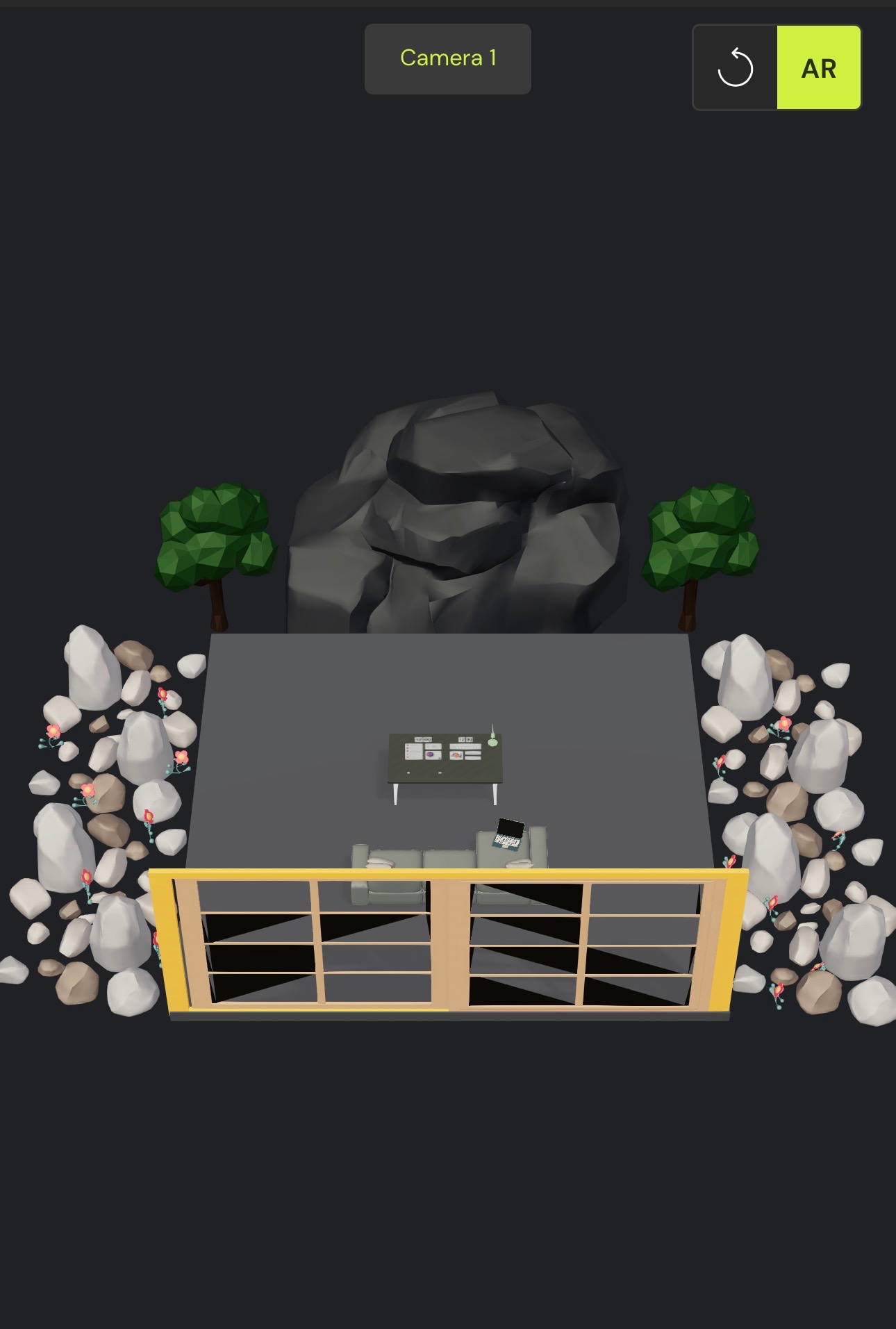
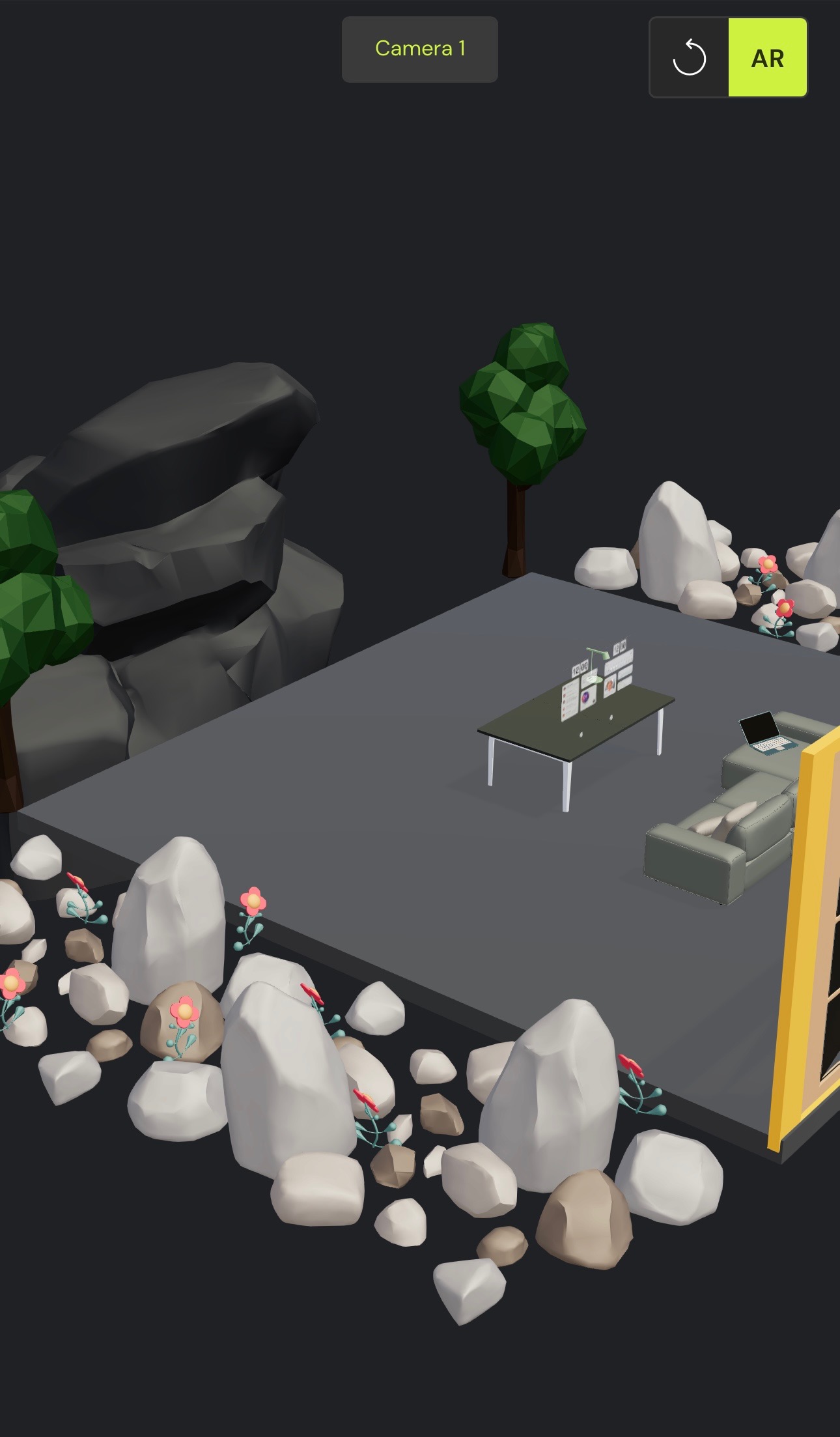
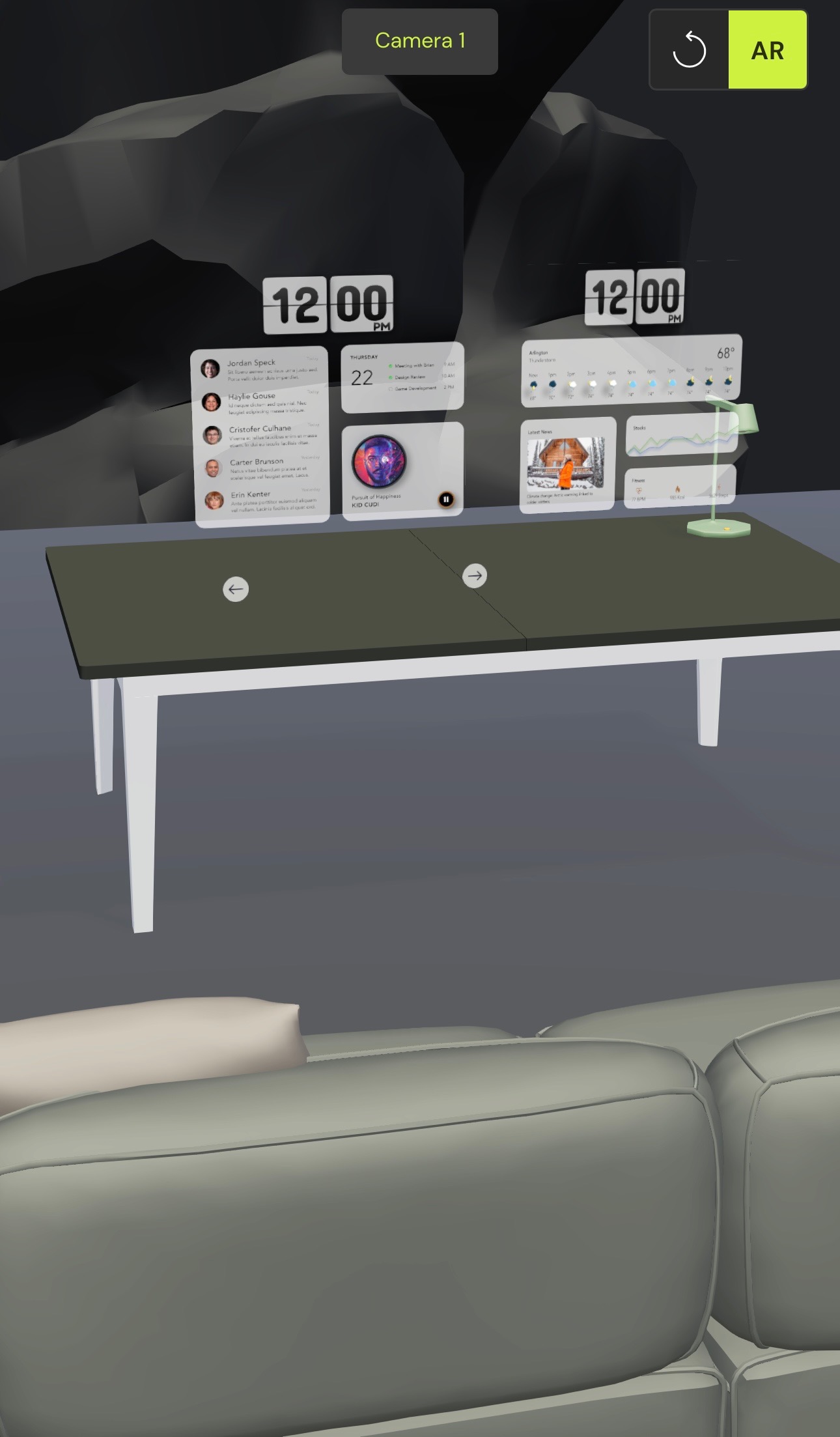
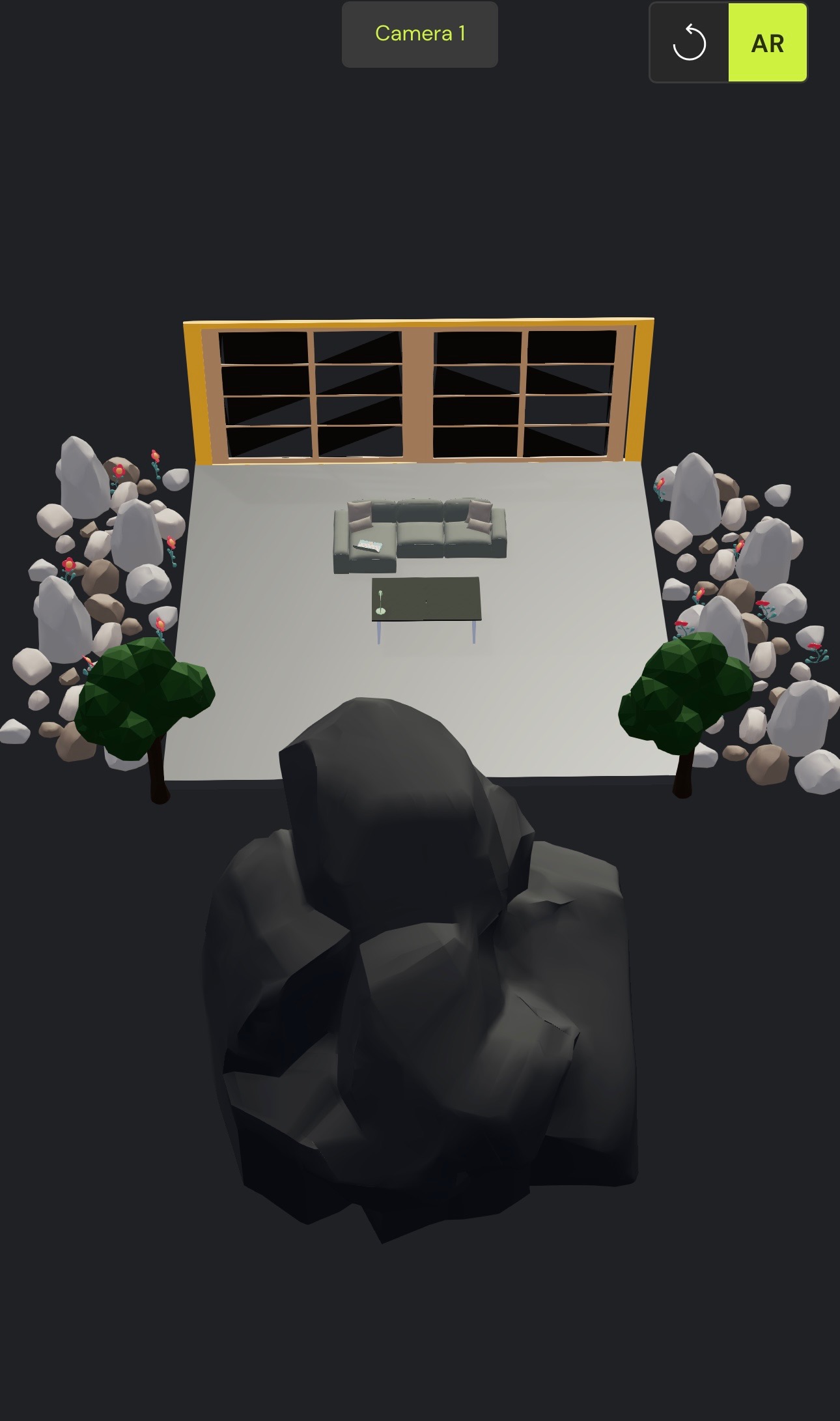
Reflection
This project reinforced the unique constraints and opportunities of spatial UX design—ranging from ergonomic depth to field of view optimization. It challenged me to think beyond the screen and adapt UI principles into a truly 3D user experience. I'm excited to build on this foundation and contribute meaningfully to the future of AR/VR interfaces.